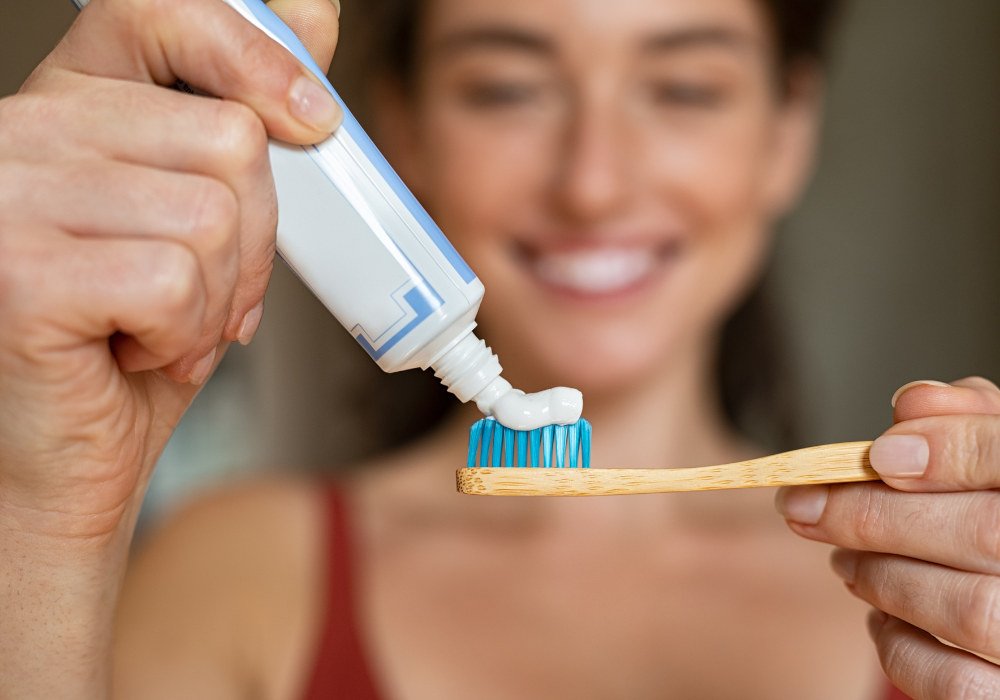How to Choose the Right Toothpaste and Toothbrush?

A toothbrush and toothpaste are more than simply bathroom supplies for your oral health. These everyday instruments aid in the prevention of a variety of dental issues, including tartar accumulation, tooth sensitivity, gingivitis, periodontitis and also cavities.
The problem is that many consumers make haphazard brush and paste selections based on advertising, packaging, or pricing. As a result, brushing damages gums and enamel and is no longer effective.
Everything you need to know about selecting the best toothbrush and toothpaste will be covered in this post. If you care about your oral health — keep reading.
Why Choosing the Right Hygiene Products Is So Important
Too much abrasive toothpaste or an improper toothbrush can create irritation, expose tooth necks and also destroy enamel.
You need specific dental items that won’t exacerbate any existing problems, including cavities, fillings, braces, implants or bleeding gums.
Many patients complain of “plaque that won’t go away,” but in most cases, poor brushing isn’t the problem; rather, it’s the incorrect equipment.
How to Choose a Toothbrush: Key Factors
- Type: Electric or Manual?
| Brush Type | Advantages | Best for |
| Manual | Affordable, accessible, simple | People who brush thoroughly and correctly |
| Electric | High efficiency, built-in timer | Patients with braces, kids, older adults |
| Ultrasonic | Deep cleaning (even in gum pockets) | Patients with periodontitis, braces, or heavy plaque |
An electric brush with a round head is one of the most effective daily options.
2. Bristle Hardness: A Critical Factor
| Type | Description | Recommended For |
| Soft | Gentle, doesn’t harm gums | Sensitivity, receding gums, post-treatment |
| Medium | Balance of cleaning and comfort | Most people with healthy gums |
| Hard | Abrasive, high risk of trauma | Not recommended — can harm enamel and gums |
Always use soft bristles, and use a water flosser or floss to go along with brushing.
- Brush Head and Handle Design
The brush head should be small enough to reach the wisdom teeth and rear molars.
The ergonomic, non-slip handle should preferably include rubber inserts.
- When to Replace Your Toothbrush
Every 2–3 months, regardless of appearance.
Immediately after illness (flu, sore throat, etc.)..
Replace it right away if the bristles are torn or distorted.
How to Choose Toothpaste: Types and Ingredients Explained
Toothpaste is not universally applicable. Its composition should be in line with your gum health, sensitivity level, enamel condition, and if you have braces or implants in your teeth.
Let’s look at the main categories:
- Fluoride Toothpaste – for Cavity Prevention
One important mineral that fortifies enamel, aids in remineralizing weak areas, and shields teeth from acid assaults is fluoride.
- The suggested range for adults is 1000–1450 ppm.
- In tiny doses, up to 1000 ppm for kids under six.
- If fluoride toothpaste is used properly and is not ingested, it is safe.
Fluoride toothpaste is essential if you’re prone to cavities, have dry mouth, or wear braces.
- Toothpaste for Sensitivity (Sensitive)
When the dentin, the inner layer, is exposed, tooth sensitivity results. Specialized pastes block nerve impulses and lessen pain.
Key ingredients:
- Nerve channels are blocked by potassium nitrate.
- Dentin tubules are sealed by stannous fluoride.
- One of the components of enamel that helps with healing is hydroxyapatite.
Patients often report relief from heat, cold, or sweet sensitivity after using it regularly for two to three weeks.
- Whitening Toothpaste: Safe Step or Vibrant Smile?
Whitening toothpastes don’t alter the original color of teeth; they simply work on the enamel’s surface and can get rid of external stains.
Types:
- The RDA index for mechanical (abrasive) materials should be less than 70.
- Chemical (including hydrogen peroxide or carbamide): not recommended for daily usage as it may create sensitivity.
Choose professional whitening rather than toothpaste if you want a really white smile.
- Gum-Care Toothpaste: For Inflammation and Bleeding
These pastes lessen bleeding and irritation while also soothing the gums.
Typical components:
- Chlorhexidine and cetylpyridinium are antiseptics.
- Calendula, sage, and chamomile herbal extracts.
- Allantoin and zinc lactate are anti-inflammatory drugs.
Antiseptic pastes might disturb oral flora, therefore don’t use them for more than two to three weeks without a dentist’s advice.
- Fluoride-Free Toothpaste – Only If Necessary
Suitable for:
- Individuals who have fluorosis due to excessive fluoride exposure,
- Those with allergies to fluoride,
- young youngsters less than three.
Don’t choose fluoride-free unless medically indicated — it may weaken enamel protection.
Expert Tips: How to Maximize Your Oral Care Routine
Focus on Your Needs, Not Marketing
Buzzwords like “whitening,” “natural,” and “with charcoal” don’t necessarily translate into advantages. Always review the RDA index and ingredient list.
Know the RDA (Relative Dentin Abrasivity)
Below 70 – safe for daily use.
70–100 – conditionally safe.
Over 100 can cause enamel damage, use only as directed by a dentist because .
Every two to three months, rotate your toothpaste.
For instance, use fluoride toothpaste for two months and gum care paste for one month. This helps reduce product weariness and increases results.
Use Complementary Hygiene Tools
Brush and toothpaste are only the beginning. For comprehensive care, include mouthwash, floss, and a water flosser.
Avoid Harmful DIY Trends
Charcoal, baking soda, lemon juice — these damage enamel. They may lead to restoration needs or even root canal treatment.
Dental Consultations Are Key
Only your dentist can examine the state of your teeth and gums and prescribe really effective, safe items customized to you.
Conclusion
A healthy smile is built on the basis of using the proper toothbrush and toothpaste, which goes beyond simple comfort. Your gum health, age, fillings, braces, and implant status should all be taken into consideration while choosing them.
At KClinics, we not only treat — we educate our patients on proper care. We will help you in choosing a customized hygiene kit that is safe, convenient, and effective for you.



